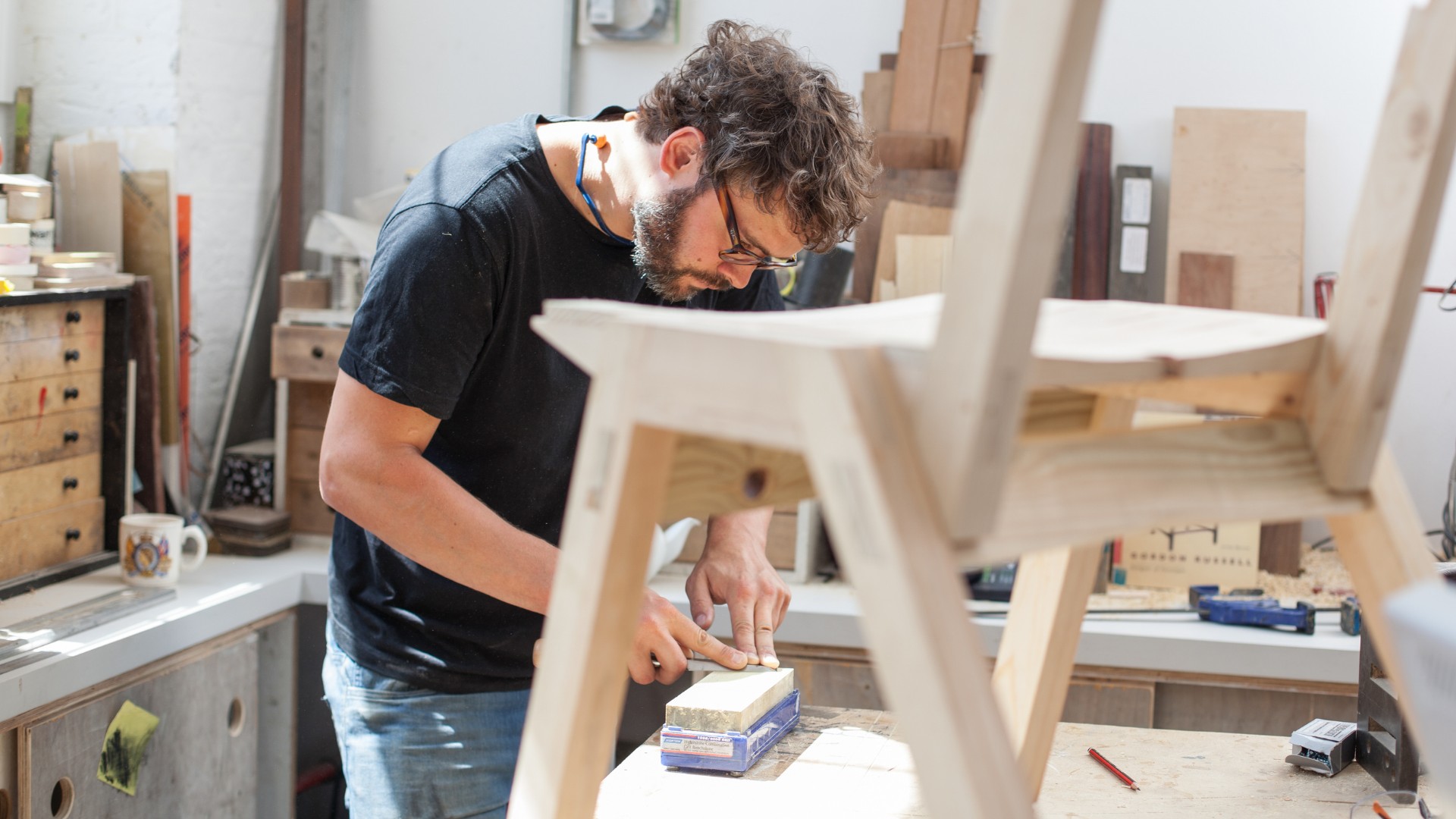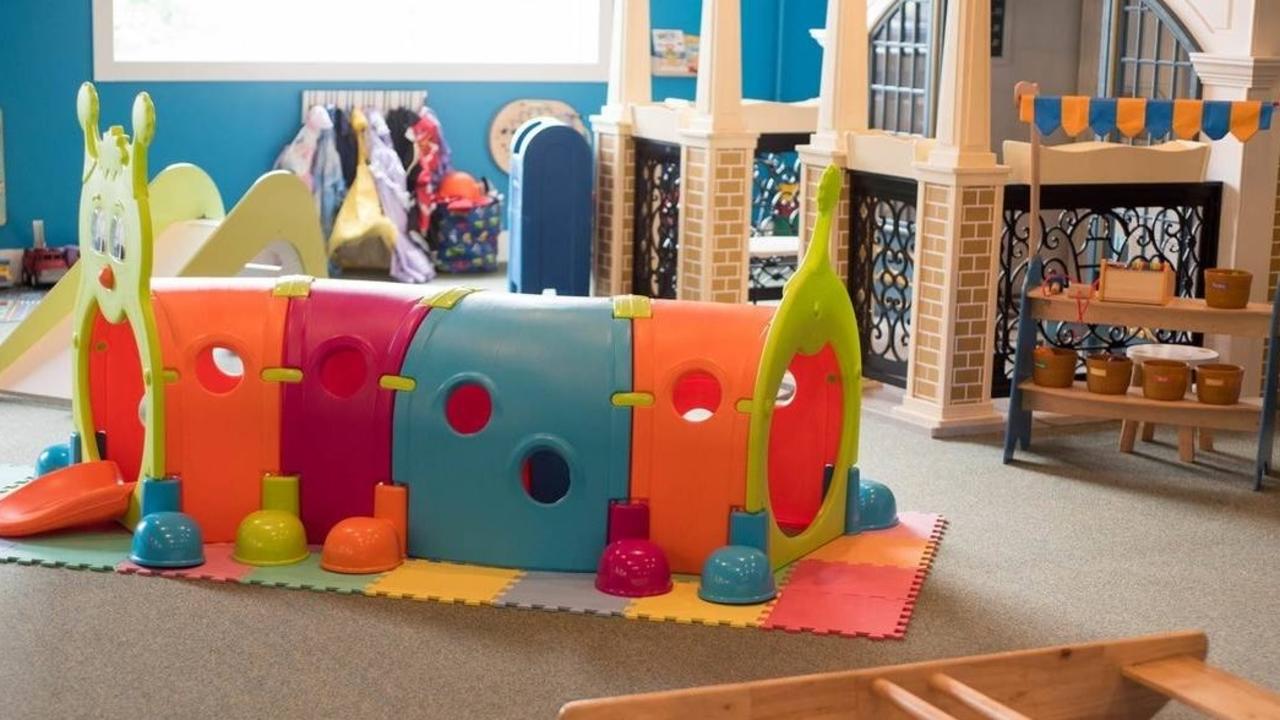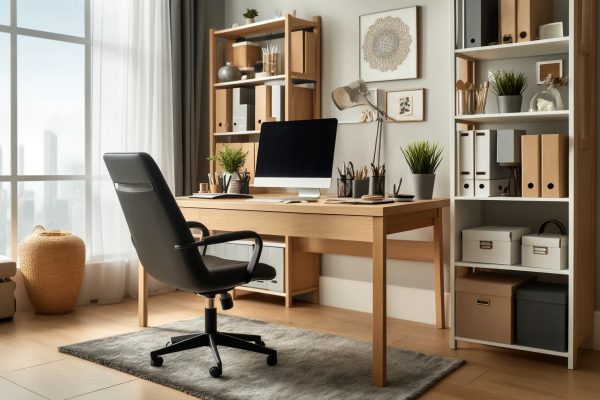

Articles
How To Start A Furniture Business
Modified: October 20, 2024
Learn the essential steps to start your own furniture business. Discover strategies for finding suppliers, marketing your products, and building a successful brand in the competitive furniture industry.
(Many of the links in this article redirect to a specific reviewed product. Your purchase of these products through affiliate links helps to generate commission for Storables.com, at no extra cost. Learn more)
Introduction
Welcome to the world of furniture! Whether you have always dreamt of starting your own furniture business or are looking to expand your existing furniture venture, this comprehensive guide will provide you with the necessary steps to get started. The furniture industry is a dynamic and thriving market, offering a plethora of opportunities for entrepreneurs with a passion for design and craftsmanship.
Starting a furniture business requires careful planning, market analysis, creativity, and a commitment to delivering high-quality products. With the right strategies in place, you can turn your passion for furniture into a successful and profitable venture.
This article will guide you through the essential steps involved in starting a furniture business. From conducting market research and creating a business plan to establishing an online presence and marketing your products, we will cover all aspects to help you set up and grow your furniture business effectively.
So, let’s dive into the first step of this exciting journey: researching the market and analyzing your target audience.
Key Takeaways:
- Starting a successful furniture business involves thorough market research, strategic planning, and a commitment to delivering high-quality products. From creating a business plan to establishing an online presence, each step is crucial for long-term success.
- Building a furniture business requires adaptability, innovation, and a customer-centric approach. Embracing industry trends, fostering customer relationships, and providing exceptional customer service are key elements in achieving growth and success.
Read more: How To Start An Insulation Business
Step 1: Research and Market Analysis
Before diving headfirst into the world of furniture business, it is important to conduct thorough market research and analysis. This step will help you understand the current trends, consumer preferences, and potential competitors in the furniture industry.
Here are some key factors to consider during the research and market analysis phase:
- Identify your target market: Determine who your ideal customers are. Are you targeting homeowners, interior designers, or commercial clients? Understanding your target market will help you tailor your product offerings and marketing strategies.
- Study the competition: Research existing furniture businesses in your area and analyze their products, pricing, branding, and target audience. This will give you insight into market trends and help you identify gaps or niches that your business can fill.
- Stay informed about industry trends: Furniture trends can change rapidly, so it’s crucial to stay up-to-date with the latest designs, materials, and styles. Follow design magazines, visit furniture trade shows, and explore online platforms to understand the evolving preferences of consumers.
- Conduct customer surveys: Engage with potential customers through surveys or focus groups to gather feedback on their furniture needs, preferences, and pain points. This will provide valuable insights to refine your product offerings and improve the customer experience.
- Analyze pricing and profit margins: Determine the price points at which you can offer your products while ensuring a reasonable profit margin. Research the pricing strategies of your competitors and consider factors such as material costs, labor expenses, and overheads.
By conducting thorough research and market analysis, you will have a solid foundation for developing your business strategy. The insights gained from this step will help you make informed decisions when it comes to product development, pricing, marketing, and customer acquisition.
Once you have gathered sufficient data and knowledge about the market, it’s time to move on to the next step: creating a comprehensive business plan.
Step 2: Create a Business Plan
A well-crafted business plan is crucial for the success of any furniture business. It serves as a roadmap that outlines your vision, goals, strategies, and financial projections. A business plan helps you clarify your ideas, attract investors or secure financing, and provides a reference point for measuring your progress.
Here are the key components to include in your furniture business plan:
- Executive Summary: Provide a concise overview of your business, including your mission statement, target market, and competitive advantages.
- Company Description: Describe your furniture business in detail, including its structure, legal status, location, and any unique selling points.
- Market Analysis: Present the findings from your market research, including details about your target market, customer demographics, and the competitive landscape.
- Product Line and Strategy: Outline the types of furniture you plan to offer, along with your product development and sourcing strategies.
- Sales and Marketing: Describe how you will promote and sell your furniture, including your pricing strategy, distribution channels, and advertising plans.
- Operations and Management: Explain how your business will operate on a day-to-day basis, including details about your production process, inventory management, and staffing requirements.
- Financial Projections: Provide a comprehensive forecast of your financial projections, including startup costs, revenue expectations, and expenditure estimates. This will help you assess the financial viability of your business and attract potential investors.
Creating a business plan may seem like a daunting task, but it is an essential step in ensuring the long-term success of your furniture business. It helps you articulate your goals, identify potential challenges, and develop strategies to overcome them.
Consider seeking guidance from a business advisor or consulting industry professionals to ensure your business plan is comprehensive and well-structured.
With your business plan in place, you are now ready to move on to the next step: choosing the right location for your furniture business.
Step 3: Choose the Right Location
The location of your furniture business plays a crucial role in its success. A well-chosen location can attract more customers, increase visibility, and contribute to the overall profitability of your venture. When selecting a location, consider the following factors:
- Target Market: Choose a location that is easily accessible to your target market. If you are targeting residential customers, consider setting up your business in a neighborhood with a high concentration of homeowners. If your target market consists of commercial clients, look for areas with office spaces and commercial establishments.
- Competition: Take into account the proximity of your competitors. While it can be beneficial to be in the same area as other furniture businesses (as it can attract more customers interested in furniture), make sure there is a healthy balance and that you have a unique selling proposition to differentiate yourself from the competition.
- Foot Traffic: Consider the amount of foot traffic in the area. A location with high foot traffic, such as a shopping mall or a busy street, can increase the visibility of your furniture business and attract potential customers. However, keep in mind that higher foot traffic often comes with higher rental costs.
- Accessibility and Parking: Ensure that your chosen location is easily accessible by both car and public transportation. Additionally, having ample parking facilities for your customers can be a significant advantage.
- Costs: Consider your budget and financial resources when choosing a location. Take into account the rental or lease costs, utility expenses, and any renovation or setup costs required for the space.
- Potential for Expansion: If you have plans to expand your furniture business in the future, consider selecting a location that can accommodate your growth plans. Look for a space that offers flexibility and room for expansion.
It is also advisable to visit potential locations and assess their condition, layout, and overall suitability for your furniture business. Take note of any specific requirements you may have, such as adequate space for display or storage of furniture pieces.
Once you have chosen the right location, you can proceed to the next step: obtaining necessary permits and licenses.
Step 4: Obtain Necessary Permits and Licenses
Before officially opening your furniture business, it is essential to obtain the necessary permits and licenses to operate legally. Compliance with local, state, and federal regulations is crucial to avoid legal issues and ensure the smooth operation of your business.
Here are some permits and licenses you may need to consider:
- Business License: Check with your local government authorities to determine the specific requirements for obtaining a business license for your furniture business. This license allows you to legally operate within the jurisdiction.
- Sales Tax Permit: If you plan to sell furniture directly to customers, you will likely need to obtain a sales tax permit. This permit allows you to collect and remit sales taxes to the appropriate tax authorities.
- Employer Identification Number (EIN): If you plan to hire employees for your furniture business, you will need to obtain an EIN from the Internal Revenue Service (IRS). This unique identification number is used for tax purposes and reporting employee wages.
- Occupancy Permit: Depending on the location and zoning regulations, you may need to obtain an occupancy permit to ensure that your business complies with building and safety codes.
- Environmental Permits: If your furniture business involves any activities that could have environmental impacts, such as woodworking or finishing, you may need to obtain environmental permits to ensure compliance with regulations and proper waste management.
It is crucial to research the specific permits and licenses required for your furniture business in your local area. Contact the appropriate government agencies or consult with a business attorney or advisor to ensure that you are in compliance with all legal requirements.
Keep in mind that permit and license requirements can vary depending on your location and the nature of your business. It is important to stay updated on any changes in regulations and renew your permits and licenses as required.
Once you have obtained the necessary permits and licenses, you can move forward with the next steps in setting up your furniture business.
Read more: How To Start A Picnic Business
Step 5: Source Suppliers and Materials
One of the key aspects of running a successful furniture business is sourcing high-quality materials from reliable suppliers. The quality of your materials directly influences the durability, aesthetics, and overall value of your furniture products. Here are some steps to consider when sourcing suppliers and materials:
- Research Suppliers: Conduct thorough research to identify potential suppliers for the materials you need. Look for suppliers who specialize in furniture-grade materials and have a good reputation for delivering quality products.
- Attend Trade Shows: Attend local or international trade shows related to the furniture industry. These events provide an excellent opportunity to meet suppliers, compare materials, and negotiate prices.
- Request Samples: Before committing to a supplier, request samples of their materials to evaluate their quality, durability, and aesthetic appeal. This step is crucial to ensure that the materials meet your standards and align with your brand image.
- Establish Relationships: Building strong relationships with your suppliers is essential for the long-term success of your furniture business. Communicate your requirements clearly, negotiate pricing and terms, and strive for mutually beneficial partnerships.
- Consider Sustainability: In today’s eco-conscious world, consider sourcing materials from sustainable suppliers who follow environmentally responsible practices. This not only aligns with consumer preferences but also helps in enhancing your brand reputation.
- Monitor Quality and Consistency: Regularly monitor the quality of materials provided by your suppliers to maintain the consistency and integrity of your products. Conduct quality checks and address any issues promptly to ensure customer satisfaction.
- Explore Customization Options: Depending on your business model, you may want to offer customization options to your customers. In such cases, work closely with your suppliers to ensure they can provide the necessary materials and components for customization.
- Consider Local Sourcing: Explore the advantages of sourcing materials locally, such as reduced transportation costs and supporting local businesses. Additionally, local suppliers may offer faster turnaround times and better control over the production process.
Remember that the quality of your furniture products relies heavily on the materials you use. Take the time to identify reputable suppliers who can consistently provide the materials that meet your standards.
Once you have established reliable supplier relationships, you can move on to the next step: designing and developing your product line.
Step 6: Design and Develop Product Line
The design and development of your product line are crucial in attracting customers and setting your furniture business apart from the competition. This step involves creating unique and appealing designs, selecting the right materials, and ensuring the functionality and quality of your furniture pieces. Here are the key steps to consider when designing and developing your product line:
- Identify your Target Market: Understand the preferences and needs of your target market. Consider factors such as style, functionality, and price range to create furniture pieces that will resonate with your potential customers.
- Research Design Trends: Stay up-to-date with the latest design trends in the furniture industry. This includes understanding popular styles, colors, finishes, and materials that are in demand. Incorporating contemporary design elements will help attract customers with modern tastes.
- Create Sketches and Prototypes: Start by creating sketches and concepts for your furniture designs. Once you have a clear vision, develop prototypes to test the functionality, comfort, and aesthetics of your furniture pieces. Refine your designs based on feedback and testing.
- Select Quality Materials: Choose materials that align with your product vision and offer durability, aesthetics, and sustainability. Consider the different types of wood, metal, upholstery, and finishing options available to create the desired look and feel.
- Focus on Ergonomics: Ensure that your furniture pieces prioritize comfort and ergonomics. Pay careful attention to factors like height, depth, cushioning, and support to create furniture that provides a comfortable and enjoyable sitting or sleeping experience.
- Develop a Signature Style: Consider developing a signature style that sets your furniture apart. This could be through unique design elements, innovative use of materials, or incorporating specific motifs or craftsmanship techniques.
- Consider Customization: Determine whether you want to offer customization options to your customers. This could involve allowing them to choose finishes, fabrics, or sizes to create personalized furniture pieces tailored to their preferences.
- Test for Durability: Ensure that your furniture pieces are built to withstand regular use and maintain their quality over time. Conduct durability tests and consider factors like the sturdiness of joints, structural integrity, and resistance to wear and tear.
Remember that your product line should reflect your brand identity and resonate with your target market. Strive to create furniture pieces that are visually appealing, functional, and of high quality.
Once your product line is finalized, it’s time to set up your workshop or manufacturing facility, which we will explore in the next step.
Research your target market thoroughly to understand their preferences and needs. This will help you create products that appeal to your potential customers.
Step 7: Set Up Workshop or Manufacturing Facility
Setting up a workshop or manufacturing facility is a crucial step in the furniture business. This is where the actual production and assembly of your furniture pieces will take place. Whether you choose to operate on a small scale or have plans for large-scale production, here are the key considerations for setting up your workshop or manufacturing facility:
- Determine Space Requirements: Assess your production needs and determine the amount of space required for your workshop or manufacturing facility. Consider factors such as the size of your furniture pieces, machinery, storage areas, and the number of employees.
- Layout and Equipment: Plan the layout of your workspace for optimal efficiency and workflow. Determine the types of equipment and machinery you will need, such as cutting machines, joinery tools, sanders, and finishing equipment. Ensure that you have sufficient power supply and ventilation systems in place.
- Comply with Safety Regulations: Adhere to safety regulations and create a safe working environment for your employees. Install safety equipment, such as fire extinguishers and first aid kits, and ensure that all machinery and tools are properly maintained and regularly inspected.
- Source Tools and Machinery: Research reputable suppliers for the tools and machinery needed for your workshop or manufacturing facility. Consider factors such as quality, reliability, and after-sales support when selecting your equipment.
- Establish Inventory Management: Set up a system for tracking and managing your inventory of raw materials and finished goods. This will help you maintain adequate stock levels, avoid overstocking or stockouts, and streamline your production process.
- Hire and Train Employees: Identify the skills and expertise required for your production operations and hire employees who possess the necessary qualifications. Provide thorough training to ensure that your team is equipped to handle the production processes effectively.
- Consider Outsourcing: Depending on your business model and production capacity, you may consider outsourcing certain aspects of your furniture production, such as upholstery or finishes, to specialized contractors. This can help optimize your resources and reduce costs.
- Create a Safe and Comfortable Workplace: Consider the ergonomics of your workspace and provide a comfortable and well-lit environment for your employees. Encourage collaboration and foster a positive work culture to ensure productivity and job satisfaction.
Remember to comply with local zoning and legal regulations when setting up your workshop or manufacturing facility. Strive for efficiency, safety, and organization to streamline your production operations.
With your workshop or manufacturing facility in place, you can move on to the next step: establishing a strong online presence for your furniture business.
Step 8: Establish a Strong Online Presence
In today’s digital age, having a strong online presence is crucial for the success of your furniture business. A well-designed website and an active presence on various online platforms can help you reach a wider audience, showcase your products, and boost sales. Here are the key steps to establish a strong online presence:
- Create a Professional Website: Design and develop a professional website that reflects your brand and showcases your furniture products. Ensure that your website is visually appealing, easy to navigate, and optimized for mobile devices.
- Showcase Your Products: Use high-quality images and engaging descriptions to showcase your furniture products on your website. Provide detailed product information, including dimensions, materials used, and customization options, if applicable.
- Optimize for Search Engines: Implement search engine optimization (SEO) strategies to improve your website’s visibility in search engine results. Conduct keyword research and optimize your website’s content, meta tags, and URLs to increase organic traffic.
- Leverage Social Media: Establish a presence on social media platforms such as Facebook, Instagram, and Pinterest. Share visually appealing images of your furniture pieces and engage with your audience through posts, comments, and messages.
- Create Engaging Content: Regularly publish informative and engaging content related to furniture design, trends, and tips on your website’s blog or through social media. This positions you as an authority in the industry and attracts potential customers.
- Encourage Customer Reviews: Incorporate customer reviews and testimonials on your website to build trust and credibility. Encourage satisfied customers to leave reviews and respond to any feedback, whether positive or negative, to showcase your dedication to customer satisfaction.
- Enable E-commerce: If feasible, provide an e-commerce option on your website to allow customers to browse and purchase furniture directly from your online store. Implement secure payment gateways and provide clear shipping and return policies.
- Collaborate with Influencers: Partner with influencers or bloggers in the home decor or furniture industry to promote your products. Their endorsements can help expand your reach and attract new customers.
- Invest in Online Advertising: Consider investing in online advertising platforms, such as Google Ads or social media advertising, to increase your visibility and reach a wider audience. Target specific demographics and geographic regions to optimize your advertising campaigns.
Remember, maintaining an active and engaging online presence requires consistent effort. Regularly update your website, post on social media, and respond to customer inquiries to build lasting relationships with your audience.
With a strong online presence established, you can now move on to the next step: developing pricing and sales strategies for your furniture business.
Read more: How To Start A Woodworking Business
Step 9: Develop Pricing and Sales Strategies
Developing effective pricing and sales strategies is crucial for the profitability and sustainability of your furniture business. Determining the right pricing structure and implementing effective sales techniques will help you attract customers, maximize revenue, and stay competitive in the market. Here are the key steps to develop pricing and sales strategies:
- Cost Analysis: Calculate the costs involved in producing your furniture, including materials, labor, overheads, and any other expenses. This will give you a clear understanding of your production costs and help determine a baseline for setting prices.
- Competitive Analysis: Research your competitors’ pricing strategies to gain insights into the market standards and customer expectations. Consider factors such as the quality of their products, their target market, and the value they offer to customers.
- Value-Based Pricing: Consider the value your furniture brings to customers and price accordingly. Factors such as unique design, quality craftsmanship, and customization options can justify higher prices. Communicate the value proposition and benefits clearly to customers.
- Discounts and Promotions: Determine when and how to offer discounts or promotions to entice customers and create a sense of urgency. These can be seasonal sales, limited-time offers, or bundle deals to increase sales volume and attract new customers.
- Price Segmentation: Consider segmenting your pricing based on customer preferences and market segments. You can have different price tiers or options to cater to different budget ranges or customer needs.
- Provide Financing Options: Offer financing options to make your furniture more affordable and accessible to customers. Partnering with financing institutions or providing installment payment plans can attract customers who may not have upfront funds available.
- Build Relationships: Focus on building strong relationships with customers. Provide exceptional customer service, personalized recommendations, and after-sales support. Loyal and satisfied customers are more likely to make repeat purchases and refer your business to others.
- Track and Analyze Sales Data: Implement a system to track and analyze sales data, such as customer preferences, popular products, and peak buying periods. This data will help you make informed decisions, identify trends, and optimize your pricing and sales strategies.
- Continuous Improvement: Regularly evaluate and adjust your pricing and sales strategies based on market trends, customer feedback, and business performance. Continuously seek ways to enhance value, improve profitability, and stay ahead of the competition.
Remember, pricing is not a one-size-fits-all approach. Experiment, monitor customer response, and be willing to make adjustments to find the optimal pricing and sales strategies for your furniture business.
With pricing and sales strategies in place, you can now focus on marketing and advertising to reach a wider audience and increase brand awareness, which we will explore in the next step.
Step 10: Marketing and Advertising
Marketing and advertising play a vital role in promoting your furniture business, attracting customers, and driving sales. An effective marketing strategy will help you create brand awareness, differentiate yourself from competitors, and reach your target audience. Here are the key steps to consider for effective marketing and advertising:
- Define Your Brand Identity: Clearly define your brand identity, including your unique selling propositions, brand values, and the emotions you want to evoke in your customers. This will guide your marketing efforts and help create a consistent brand image.
- Identify Your Target Audience: Identify and understand your target market, including demographics, preferences, and lifestyle. Tailor your marketing messages and tactics to resonate with your specific audience.
- Build an Engaging Website: Ensure that your website is visually appealing, user-friendly, and optimized for search engines. Use compelling imagery, informative content, and clear calls-to-action to engage visitors and encourage conversions.
- Content Marketing: Create valuable and relevant content related to furniture, interior design, and home decor. This can include blog posts, guides, videos, and social media posts that provide helpful information and showcase your expertise.
- Social Media Marketing: Develop a strong presence on social media platforms that resonate with your target audience. Share engaging content, interact with followers, and use targeted advertising to expand your reach and connect with potential customers.
- Influencer Collaborations: Partner with influencers or bloggers in the home decor or design industry to promote your products. Their endorsement can help increase your brand visibility and credibility among their followers.
- Email Marketing: Build an email subscriber list and engage with your audience through regular newsletters and promotional emails. Offer exclusive discounts or content to incentivize sign-ups and keep customers informed about new products or upcoming sales.
- Online Marketplaces: Leverage popular online marketplaces, such as Amazon, Etsy, or Houzz, to reach a wider audience and gain exposure for your furniture products. Optimize your product listings to stand out and attract potential buyers.
- Traditional Advertising: Explore traditional advertising channels such as print media, radio, or TV advertisements, depending on your target audience and budget. Consider local publications or home decor magazines to reach a relevant audience.
- Participate in Trade Shows: Showcase your furniture at local or industry-specific trade shows to connect with potential customers, interior designers, and industry professionals. Trade shows provide an opportunity to generate leads and create brand awareness.
Remember, consistency is key in your marketing efforts. Regularly review and analyze the performance of your marketing activities to identify what works best for your furniture business. Adjust your strategies as needed and continue to explore new avenues to reach your target audience.
With your marketing and advertising strategies in place, you can proceed to the next step: hiring and training employees for your furniture business.
Step 11: Hire and Train Employees
As your furniture business grows, hiring and training employees becomes essential to meet the demands of production, customer service, and business operations. Hiring the right individuals and providing comprehensive training will contribute to the success and efficiency of your furniture business. Here are the key steps to consider for hiring and training employees:
- Define Job Roles and Requirements: Clearly outline the job roles and responsibilities for each position in your furniture business. Identify the skills, qualifications, and experience required for each role, such as carpentry, upholstery, sales, administration, or customer service.
- Attract and Recruit Talent: Develop attractive job descriptions and post them on relevant online job boards, your website, and social media platforms. Utilize your professional network, industry contacts, and recruitment agencies to identify potential candidates.
- Conduct Interviews: Screen and interview potential candidates to assess their skills, experience, and cultural fit within your furniture business. Ask relevant questions to gauge their knowledge, problem-solving capabilities, and ability to work in a team.
- Provide Comprehensive Training: Once you have selected your employees, provide them with thorough training on your company policies, procedures, and safety protocols. Train them on specific job functions, such as woodworking techniques, upholstery skills, customer service, or sales techniques.
- Foster a Positive Work Environment: Create a positive and inclusive work environment that promotes teamwork, open communication, and growth. Encourage employee engagement and provide ongoing support to ensure job satisfaction and productivity.
- Encourage Skill Development: Offer opportunities for your employees to enhance their skills and stay updated with the latest industry trends and techniques. Provide access to training programs, workshops, or industry conferences to help them grow professionally.
- Implement Performance Evaluation: Establish a performance evaluation system to assess and provide constructive feedback to your employees. Set clear expectations and goals, and regularly review their performance to recognize achievements and address areas for improvement.
- Promote Cross-Training: Encourage cross-training among your employees to ensure flexibility and efficiency in your operations. This allows employees to gain a broader skill set and better understand different aspects of your furniture business.
- Provide Incentives and Recognition: Recognize and reward exceptional performance and achievements to motivate and retain your employees. This can include bonuses, incentives, employee appreciation events, or advancement opportunities within your organization.
- Maintain a Strong Organizational Culture: Cultivate a strong organizational culture based on your company’s values, vision, and mission. Promote a positive and collaborative environment that fosters creativity, innovation, and a strong work ethic.
Remember, hiring and training employees is an ongoing process. Continuously invest in the development and growth of your employees to ensure their satisfaction and to keep your furniture business running smoothly.
With a knowledgeable and skilled team in place, you can now focus on the final step: launching and growing your furniture business.
Step 12: Launch and Grow Your Business
Congratulations! You’ve reached the final step of launching and growing your furniture business. This step involves executing your plans, monitoring your progress, and making adjustments to propel your business forward. Here are the key steps to successfully launch and grow your business:
- Prepare for Launch: Coordinate all aspects of your business operations, from inventory management to marketing campaigns, to ensure a smooth launch. Double-check your website, finalize product displays, and make sure your team is ready to provide excellent customer service.
- Announce Your Launch: Leverage your online presence and marketing channels to announce your business launch. Utilize email marketing, social media platforms, and local directories to generate buzz and reach potential customers.
- Deliver Exceptional Customer Service: Focus on providing exceptional customer service to build a strong reputation and establish customer loyalty. Address customer inquiries and feedback promptly, and go the extra mile to surpass customer expectations.
- Monitor Performance and Metrics: Regularly track and assess key performance indicators (KPIs) such as sales figures, customer satisfaction, website traffic, and conversion rates. Analyze this data to identify trends, areas for improvement, and opportunities for growth.
- Build Relationships and Collaborate: Network and collaborate with complementary businesses and industry professionals to expand your reach and create mutually beneficial partnerships. This can involve joint promotions, cross-marketing initiatives, or referral programs.
- Solicit and Utilize Customer Feedback: Gather feedback from your customers through surveys, reviews, and direct communication. Utilize this feedback to improve your products, services, and overall customer experience. Incorporating customer suggestions can lead to increased customer satisfaction and loyalty.
- Implement Marketing Strategies: Continuously refine and adapt your marketing strategies based on industry trends, customer feedback, and performance analysis. Utilize a mix of online and offline advertising, content marketing, and targeted campaigns to increase brand visibility and attract new customers.
- Stay Current with Industry Trends: Keep a finger on the pulse of the furniture industry by staying informed about trends, new materials, design innovations, and consumer preferences. Attend industry trade shows and education seminars to stay up-to-date.
- Be Adaptable and Embrace Innovation: Embrace innovation, technology, and new production methods that can improve the efficiency and quality of your furniture business. Stay open to new ideas, adapt to changing market conditions, and consider opportunities for diversification or expansion.
- Invest in Employee Development: Continue to invest in the growth and development of your employees. Provide training opportunities, recognize their contributions, and create a culture of learning and continuous improvement.
Launching and growing a furniture business is an ongoing endeavor that requires dedication, perseverance, and adaptability. Continuously assess your progress, learn from your successes and challenges, and make informed decisions to drive the growth and success of your furniture business.
Remember, Rome wasn’t built in a day. Take one step at a time, remain focused, and celebrate your achievements along the way. Good luck on your journey to building a successful furniture business!
Read more: How To Start A Carpet Cleaning Business
Conclusion
Congratulations on completing this comprehensive guide on starting and growing your furniture business! You have now gained valuable insights into the essential steps required to establish a successful venture in the furniture industry.
Starting a furniture business requires careful planning, market research, creativity, and a commitment to delivering high-quality products. By conducting thorough research, creating a business plan, choosing the right location, obtaining necessary permits and licenses, sourcing reliable suppliers, designing captivating furniture pieces, setting up a workshop or manufacturing facility, establishing a strong online presence, developing pricing and sales strategies, implementing marketing and advertising initiatives, hiring and training employees, and finally launching and growing your business, you have laid the foundation for success.
Remember, building a furniture business is a continuous journey. It requires adaptability, innovation, and a commitment to continuously improving your products and services. Stay connected with your target market, embrace industry trends, and foster customer relationships to stay competitive.
Throughout this guide, we have emphasized the importance of creating a brand identity, providing exceptional customer service, and incorporating sustainable and ethical practices. These principles will help you differentiate your business in a crowded market and build a loyal customer base.
As you embark on this exciting journey, keep in mind that challenges may arise, but they are also opportunities for growth and learning. Stay focused, persevere, and utilize the knowledge and resources available to you.
We wish you great success in your furniture business and hope that this guide has provided you with the tools and insights necessary to thrive in this dynamic industry. Remember to stay passionate, innovative, and dedicated to delivering impeccable furniture that brings joy and comfort to your customers. Good luck!
Frequently Asked Questions about How To Start A Furniture Business
Was this page helpful?
At Storables.com, we guarantee accurate and reliable information. Our content, validated by Expert Board Contributors, is crafted following stringent Editorial Policies. We're committed to providing you with well-researched, expert-backed insights for all your informational needs.













0 thoughts on “How To Start A Furniture Business”